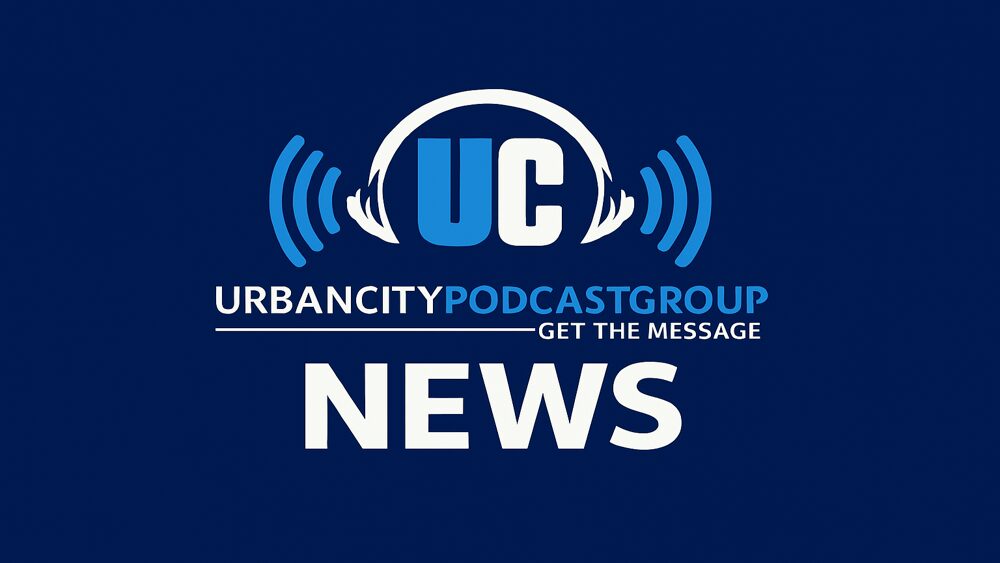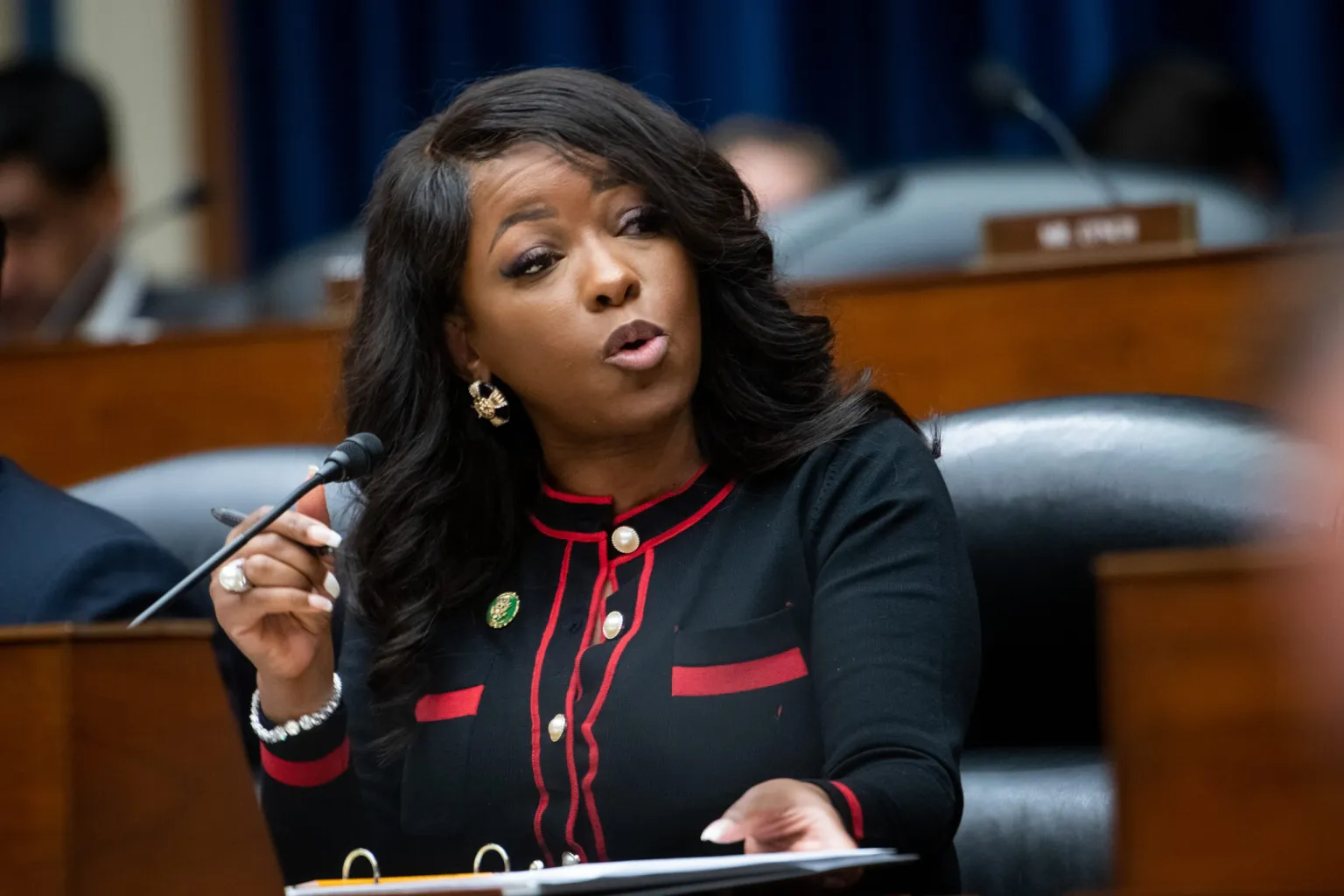Key Takeaways
- Warren Buffett has made a significant shift by moving a large portion of Berkshire Hathaway’s assets into U.S. Treasury bills, representing over 5% of the entire Treasury market.
- This notable realignment suggests that Buffett may be anticipating trouble in traditional investment sectors, particularly real estate.
- Buffett’s break from his usual long-term, value-focused investments raises concerns about potential risks that could impact the broader market.
Buffett’s Bold Shift: What Does It Mean for Investors?
You’ve likely noticed Warren Buffett’s unprecedented move into Treasury bills, and it’s sending shockwaves through investment circles.
His company now controls over 5% of the U.S. Treasury market, marking a dramatic shift from his traditional investment strategy.
This $314 billion bet against real estate and other conventional investments suggests he sees something alarming on the horizon that many investors might be missing.
What could make the world’s most successful investor abandon his long-held principles?
The Oracle’s $314 Billion Warning Signal
Three major signals from Warren Buffett’s most recent investment moves are sending shockwaves through the financial world.
You’ll want to pay close attention to Berkshire Holdings’ massive $314.1 billion Treasury investments, representing a staggering 5.1% of the entire U.S. T-Bill market.
When the world’s most successful investor shifts this dramatically into government securities, you’re witnessing a powerful warning sign.
Buffett’s 21% increase in Treasury holdings from prior quarter signals his growing caution about traditional investments.
You can’t ignore how Berkshire’s strategy has pivoted away from their usual equity investments toward these safer havens.
This strategy shift appears well-timed, with Berkshire Class A shares climbing over $740,000 per share.
With short-term rates above 4%, their Treasury investments now generate substantial income while maintaining the flexibility to pounce on future opportunities – a classic Buffett move that speaks volumes about current market risks.
Why Buffett Is Hoarding Cash Like Never Before
Berkshire Hathaway’s record-breaking $347.7 billion cash pile tells you everything you need to know about Warren Buffett’s market outlook.
His cash management strategy screams caution in today’s frothy market environment.
Rising foreclosure filings and a mounting backlog of seriously delinquent mortgages are increasing systemic risks, partially explaining why cautious investors are steering clear of overexposed real estate assets right now.
You’re witnessing a masterclass in patient investment strategy as Buffett keeps his powder dry for better opportunities.
The strategic decisions made today will shape Berkshire Hathaway’s trajectory for decades to come.
Here’s why his approach matters:
| Market Condition | Buffett’s Response | Impact |
|---|---|---|
| High Valuations | Hold Cash | Avoid Overpaying |
| Limited Deals | Buy Treasuries | Safe Returns |
| Future Correction | Ready to Deploy | Buy the Dip |
While others chase overvalued assets, Buffett’s preparing for a potential market shift.
His massive Treasury holdings and unprecedented cash reserves signal that he’s ready to pounce when prices become more reasonable, possibly within the next five years.
Real Estate’s Perfect Storm: Interest Rates and Market Signals
While Warren Buffett stockpiles cash and Treasury bonds, America’s real estate market faces a complex storm of rising interest rates and shifting market dynamics.
You’re witnessing real estate trends that signal potential market stress, with new home listings surging 8.4% and pending sales dropping by 2.2%.
The rising delinquencies in commercial real estate loans are evidence of mounting financial pressure within broader property markets.
Interest rate fluctuations have created a challenging environment where borrowing costs are higher and buyer confidence is waning.
Current conditions show mortgage rates above 7% historically lead to significant slowdowns in homebuyer activity.
You’ll notice this impact most clearly in the $318 billion of short-term rental-backed loans set to mature by 2025.
The market’s showing concerning signals: inventory levels are at their highest since 2007, and speculative home supply mirrors 2008 levels.
If you’re watching the market, these indicators suggest you should approach real estate investments with heightened caution and strategic planning.
The Hidden Message Behind Berkshire’s Treasury Pivot
So, what does Berkshire’s big move into Treasury bills really tell us about where the real estate market might be headed?
When Buffett’s team opts for the security of government debt instead of property investments, it’s a pretty strong hint they see some turbulence ahead for real estate.
Recent market uncertainty and rising inventories have made many large investors question the traditional safety of property allocations.
If America’s most trusted long-term investor is steering hundreds of billions into short-term Treasuries instead of real assets, it could be a smart time for the rest of us to consider a more cautious, patient approach, too.
With Berkshire now controlling 5% of T-bills in circulation, this unprecedented concentration of short-term government securities signals serious concerns about other investment options.
But what exactly is driving this shift—and what should investors be looking out for next?
Let’s take a closer look at the factors influencing Berkshire’s decision.
Cash Over Property Values
As savvy investors dig deeper into Warren Buffett’s recent investment moves, a powerful message emerges about the shifting terrain of wealth preservation.
Berkshire’s massive $350 billion cash position sends a clear signal about prioritizing cash liquidity over traditional property investments.
You’re witnessing a strategic pivot that emphasizes investment stability in uncertain times.
With Berkshire holding over 5% of the U.S. T-Bill market, this isn’t just a minor adjustment – it’s a seismic shift in investment philosophy.
The recent 6.64% growth in Treasury holdings reveals an accelerating rush to safety.
- Property values may become less reliable as wealth storage
- Cash positions offer unprecedented flexibility in volatile markets
- Treasury yields now compete with real estate returns
- Liquid assets provide better protection against market uncertainties
When the world’s most successful investor stockpiles cash and Treasuries, you should pay attention to what this reveals about traditional real estate investments.
Market Volatility Signals Warning
Deep beneath the surface of Berkshire’s massive Treasury bet lies a stark warning about market volatility that you can’t afford to ignore.
When a legendary investor like Buffett shifts over $314 billion into Treasury bills, you’re witnessing a seismic change in investor psychology.
The market implications are crystal clear: volatility in bond yields and uncertainty in traditional investments have created a flight to safety.
You’re seeing transformative trends in AI and quantum computing prop up major indices, yet Berkshire’s still choosing Treasury bills over stocks.
The move comes after a strategic banking sector exit that saw Berkshire unload over $3 billion in major US bank shares.
What’s particularly telling is how Berkshire’s holdings have doubled in just one year, while they’ve simultaneously reduced their equity positions.
This dramatic pivot to Treasuries signals that even the market’s most seasoned players are bracing for potential turbulence ahead.
Defensive Strategy Speaks Volumes
While market analysts debate economic indicators, the most telling signal comes from Berkshire’s massive shift to Treasury holdings – a defensive play that speaks volumes about their market outlook.
Their Treasury position has grown to $305.5 billion, revealing an unmistakable move toward defensive investments.
You can’t ignore what this strategy suggests about market caution and potential risks ahead.
Berkshire’s dramatic increase in Treasury holdings, now commanding 5.1% of the U.S. T-Bill market, signals serious concerns about economic stability.
The firm’s recent sell-off of Apple shares adds to evidence of their defensive positioning.
- Treasuries now yield around 1.6%, yet Berkshire chooses safety over higher-yielding investments
- Their cash reserves have swelled to nearly $350 billion
- They’ve reduced exposure to banking stocks considerably
- This defensive posture represents their largest-ever position in government securities
Their actions suggest you should carefully reconsider your own risk tolerance and investment strategy.
Following Smart Money: What 5.1% Market Share Really Means
The significance of a 5.1% market share extends far beyond mere numbers in today’s investment environment.
When you track market dynamics closely, you’ll notice how major players like Warren Buffett shape investor behavior through their strategic moves and calculated decisions.
The recent $321 billion cash reserve demonstrates the magnitude of positioning for market uncertainty and opportunities.
You’ll find that this level of market influence often signals deep market understanding and careful risk management.
Investors who control such significant portions of the market don’t make decisions lightly – they’re usually backed by extensive research and strategic planning.
Following these market leaders can provide you with valuable insights into emerging trends and potential opportunities.
When you see major investors maintaining substantial cash reserves or making strategic moves into specific sectors, it’s often a sign of broader market shifts worth your attention.
The Real Estate Bubble Through Buffett’s Lens
Let’s take a closer look at what Warren Buffett is up to these days—specifically, his recent pivot toward Treasury bonds.
When an investor of his caliber starts moving significant sums into relatively safe fixed-income options offering around 5.1%, it’s worth paying attention.
This could be a sign that he sees potential risks or overvaluation in the real estate market right now.
Mortgage rates have surged to 8.1%, the highest in over two decades, which is drastically impacting affordability and reshaping investor strategies.
Notably, Buffett’s own home, purchased for $31,500 in 1958, demonstrates his lifelong commitment to value-based decisions rather than speculative investments.
So instead of jumping headfirst into pricey property deals, it might make sense to keep extra cash on hand, just like Buffett is doing.
With that in mind, let’s explore what this means for navigating today’s tricky real estate landscape.
Overvalued Markets Signal Trouble
Examining recent market trends through Warren Buffett’s legendary investment lens reveals concerning signals about America’s real estate environment.
The surge in mortgage rates from 3% to over 7% has created considerable market corrections that demand buyer caution.
You’re witnessing a perfect storm of market volatility, where rising inflation meets severe inventory shortages.
The result?
A housing market that’s becoming increasingly unstable and challenging to maneuver.
A significant 38% of buyers report diminished willingness to purchase properties due to current market conditions.
- Housing prices continue climbing despite affordability concerns
- Mortgage rates predicted to stay above 6.5% until 2027
- First-time buyers face unprecedented market barriers
- Foreclosure activity expected to increase considerably
These conditions mirror Buffett’s warnings about overvalued markets, suggesting you might want to reconsider your real estate investment strategy in favor of more diversified options.
Cash Beats Property Now
Warren Buffett’s massive shift toward Treasury bills speaks volumes about today’s investment environment, especially when comparing cash to real estate holdings.
With a staggering $314 billion invested in T-bills, yielding 4.359%, you’re seeing a clear signal about market stability and risk assessment.
You’ll notice how this strategic move emphasizes investment diversification during uncertain times.
While real estate traditionally offers growth potential, T-bills now provide competitive returns with considerably less risk and better liquidity.
Consider this: Berkshire’s holding of 5.1% of the entire T-bill market isn’t just about playing it safe – it’s about recognizing that sometimes, cash truly is king.
When someone as savvy as Buffett parks billions in government securities instead of property, you’d be wise to take notice.
The company maintains this substantial position through weekly auction participation, often investing up to $10 billion at a time.
Global Economic Uncertainty vs. Property Markets
While global economic uncertainty continues to shake financial markets, the U.S. property market has shown remarkable resilience in the face of mounting challenges.
The current market dynamics reflect a complex interplay between rising interest rates and shifting investment behavior, creating both opportunities and risks for property investors.
In addition, the recent inventory surge across the housing market has signaled stagnating sales activity beneath the surface.
Direct real estate transactions hit US$185 billion in Q1 2025, demonstrating strong market momentum despite broader economic concerns.
You’ll need to steer through these key factors that are reshaping the U.S. real estate terrain:
- Interest rates have directly impacted mortgage costs and buyer activity
- Consumer confidence has dropped, affecting real estate demand
- Economic growth concerns are influencing investment decisions
- Financial market volatility is creating additional investment risks
Despite these challenges, real estate’s relative value compared to public markets remains favorable, especially in industrial and office sectors.
You’ll find that careful portfolio positioning and strategic timing can help maximize opportunities in this uncertain environment.
The Silent Exodus: From Real Estate to Treasury Bills
Recent market shifts have sparked a notable movement of capital from traditional real estate investments into Treasury bills.
You’re witnessing an investment migration that’s reshaping the market, as investors seek refuge in the treasury allure of stable government securities.
With multifamily deliveries expected to decline 30% and industrial supply dropping by 50% in 2025, many real estate investors are reconsidering their positions.
The promise of falling interest rates and Treasury yields at 3.9% has created an appealing alternative to property investments.
You’ll notice this shift isn’t just about returns – it’s about safety.
As global uncertainty rises and market volatility increases, Treasury bills offer that sought-after safe haven status, leading many investors to quietly adjust their portfolios away from real estate and toward these more stable government securities.
The 30-year Treasury yields have surpassed 5% for the first time since 2007, making government securities increasingly attractive to institutional investors.
Timing the Market: Berkshire’s Historical Investment Patterns
Throughout Berkshire Hathaway’s storied history, strategic market timing has played a pivotal role in building one of America’s most successful investment portfolios.
You’ll notice a clear pattern in how Warren Buffett capitalizes on market downturns, maintaining substantial cash reserves to seize opportunities when others panic.
Much like market adaptability in real estate, this disciplined preparation allows him to act confidently when others are paralyzed by fear.
This approach has proven incredibly successful during major market corrections, as evidenced by strategic investments during the 2008 financial crisis.
The company’s $5 billion investment in Goldman Sachs during this period yielded remarkable returns.
Despite experiencing a 31.78% drop in 2008, Berkshire’s long-term strategy remained unwavering.
- Maintains significant cash reserves for opportunistic buying
- Targets undervalued companies during market downturns
- Focuses on long-term value rather than short-term gains
- Demonstrates patience in waiting for ideal entry points
You can learn from Berkshire’s disciplined approach to timing, which emphasizes preparation and decisive action when opportunities arise.
The Coming Real Estate Reset: Buffett’s Crystal Ball
As legendary investor Warren Buffett surveys the current real estate milieu, his crystal ball suggests a significant market reset may be on the horizon.
His company, Berkshire Hathaway, has issued warnings that 2025’s home buyers should prepare for changing market conditions.
In line with these cautionary signals, new blockchain-powered transparency and AI analytics are rapidly shifting how investors evaluate and participate in real estate joint ventures, potentially accelerating market shifts.
You’ll want to note that Buffett’s real estate valuation concerns stem from the unusual market conditions of 2020 and 2021.
Real estate requires higher initial capital compared to stock market investments that allow fractional buying.
While his own Omaha home has appreciated from $31,500 to roughly $1.4 million since 1958, he’s cautioning against expecting similar returns in today’s environment.
His market predictions align with historical patterns showing that corrections are natural parts of long-term trends.
If you’re considering real estate investments now, Buffett’s wisdom suggests you might want to adjust your expectations and consider alternative investment vehicles like stocks.
Frequently Asked Questions
How Does Berkshire’s T-Bill Strategy Affect Small Real Estate Investors?
Like a tidal wave, Berkshire’s massive T-bill investment impacts your real estate strategy by reducing available lending funds, raising borrowing costs, and creating tougher competition while offering safer investment alternatives.
What Specific Real Estate Sectors Does Buffett Consider Most Vulnerable?
You’ll find commercial properties, particularly office buildings and retail spaces, face the highest risk, while the housing market remains vulnerable due to rising rates and affordability challenges.
Could Berkshire’s Treasury Holdings Trigger a Government Debt Crisis?
You shouldn’t worry about Berkshire’s treasury holdings causing a debt crisis. While they own 5.1% of treasury bills, it’s a stabilizing force that actually strengthens government debt markets.
How Long Does Buffett Typically Hold Treasury Positions Before Shifting?
You’ll find Buffett’s holding duration for Treasuries varies based on his investment strategy, but he typically maintains positions for 3 months or less, rolling them over for continued liquidity.
Are International Real Estate Markets Safer Than U.S. Markets Currently?
You’ll find that international and U.S. markets each carry distinct risks. While global real estate offers diversification benefits, neither market is inherently safer – investment stability depends on specific regional conditions.
A Pivotal Moment in Investing Playing Out in Real Time
Buffett’s huge bet on Treasuries isn’t just playing it safe, it’s a wake-up call for anyone with money in real estate.
When someone as legendary as Buffett puts billions into government bonds instead of property, that’s not something to brush off. It’s a clear sign he’s prioritizing safety over risk.
If you’re heavily invested in real estate, now might be the time to pause and reconsider your strategy. This market shift could come faster than you think.













